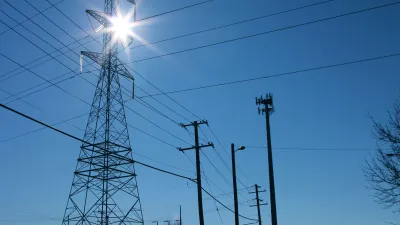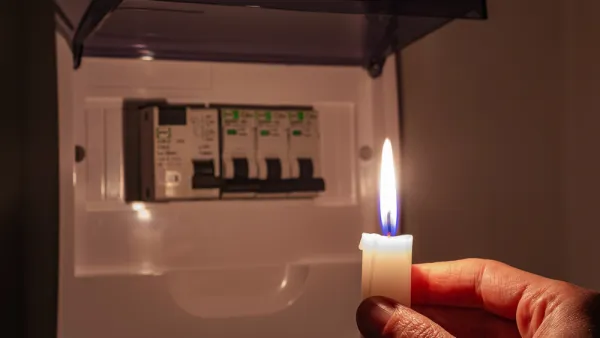Utilities profit from building more power plants—a flawed model for a diminishing natural monopoly.

David Roberts argues that New York State's Reforming the Energy Vision (REV) may be "the most important clean energy policy initiative in the country today." Not only can it change a poorly aligned incentive structure but also will contribute to national carbon reduction targets, setting an example for the rest of the country.
"Reforming utilities is a perilous process, with intense politics and high stakes. Reliable service must be maintained throughout any transition — it's like rebuilding an airplane in flight," Roberts warns. There remain many uncertainties about how and whether or not it will work, but he opines that New York's innovative vision is a clear path to real reform.
The REV will tackle grid inefficiencies by smoothing out the load profile - reducing congestion at peak energy hours. "To do that, it needs to encourage energy efficiency, demand shifting, and distributed energy resources (DER)s — all of which, in the traditional regulatory model, reduce utility revenue." This is because utilities make money by building more power plants—not by improving efficiency of existing plants.
To fill the gap in revenues from reduced capital expenditures, the REV proposes that utilities are restructured to be distributed service providers (DSPs), responsible for maintaining the grid but also involved in creating and managing “markets where third parties can compete to provide energy products and services on the retail side, things like energy storage, demand response, and distributed generation,” Roberts explains.
"The boundary of the [public utility's] natural monopoly has moved inward again. What remains of it is grid operations and reliability planning — that is, running the distribution grid itself. That's the only function that is still properly the purview of a publicly accountable, regulated utility."
FULL STORY: New York's revolutionary plan to remake its power utilities

Analysis: Cybertruck Fatality Rate Far Exceeds That of Ford Pinto
The Tesla Cybertruck was recalled seven times last year.

National Parks Layoffs Will Cause Communities to Lose Billions
Thousands of essential park workers were laid off this week, just before the busy spring break season.

Retro-silient?: America’s First “Eco-burb,” The Woodlands Turns 50
A master-planned community north of Houston offers lessons on green infrastructure and resilient design, but falls short of its founder’s lofty affordability and walkability goals.

Test News Post 1
This is a summary

Analysis: Cybertruck Fatality Rate Far Exceeds That of Ford Pinto
The Tesla Cybertruck was recalled seven times last year.

Test News Headline 46
Test for the image on the front page.
Urban Design for Planners 1: Software Tools
This six-course series explores essential urban design concepts using open source software and equips planners with the tools they need to participate fully in the urban design process.
Planning for Universal Design
Learn the tools for implementing Universal Design in planning regulations.
EMC Planning Group, Inc.
Planetizen
Planetizen
Mpact (formerly Rail~Volution)
Great Falls Development Authority, Inc.
HUDs Office of Policy Development and Research
NYU Wagner Graduate School of Public Service



























